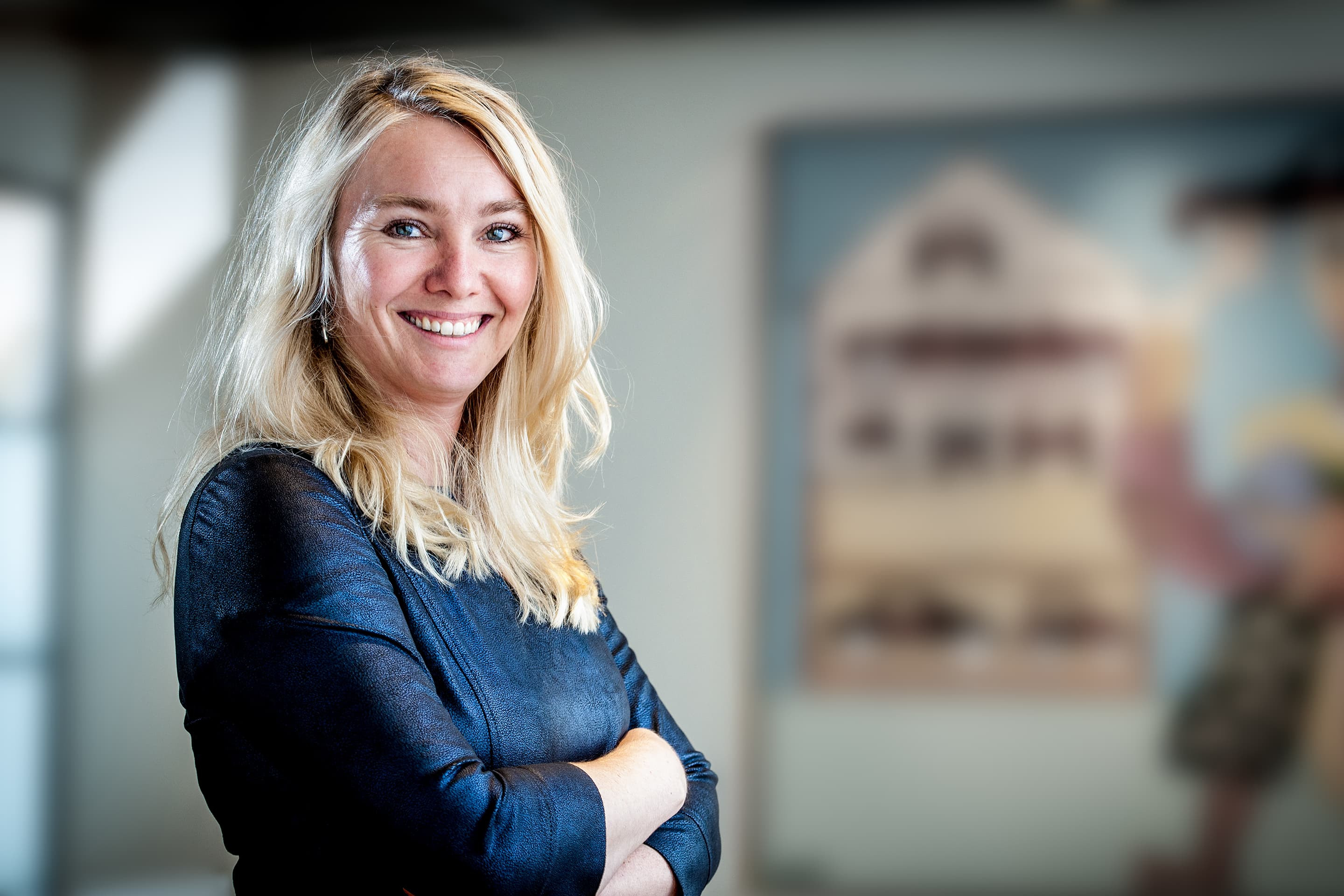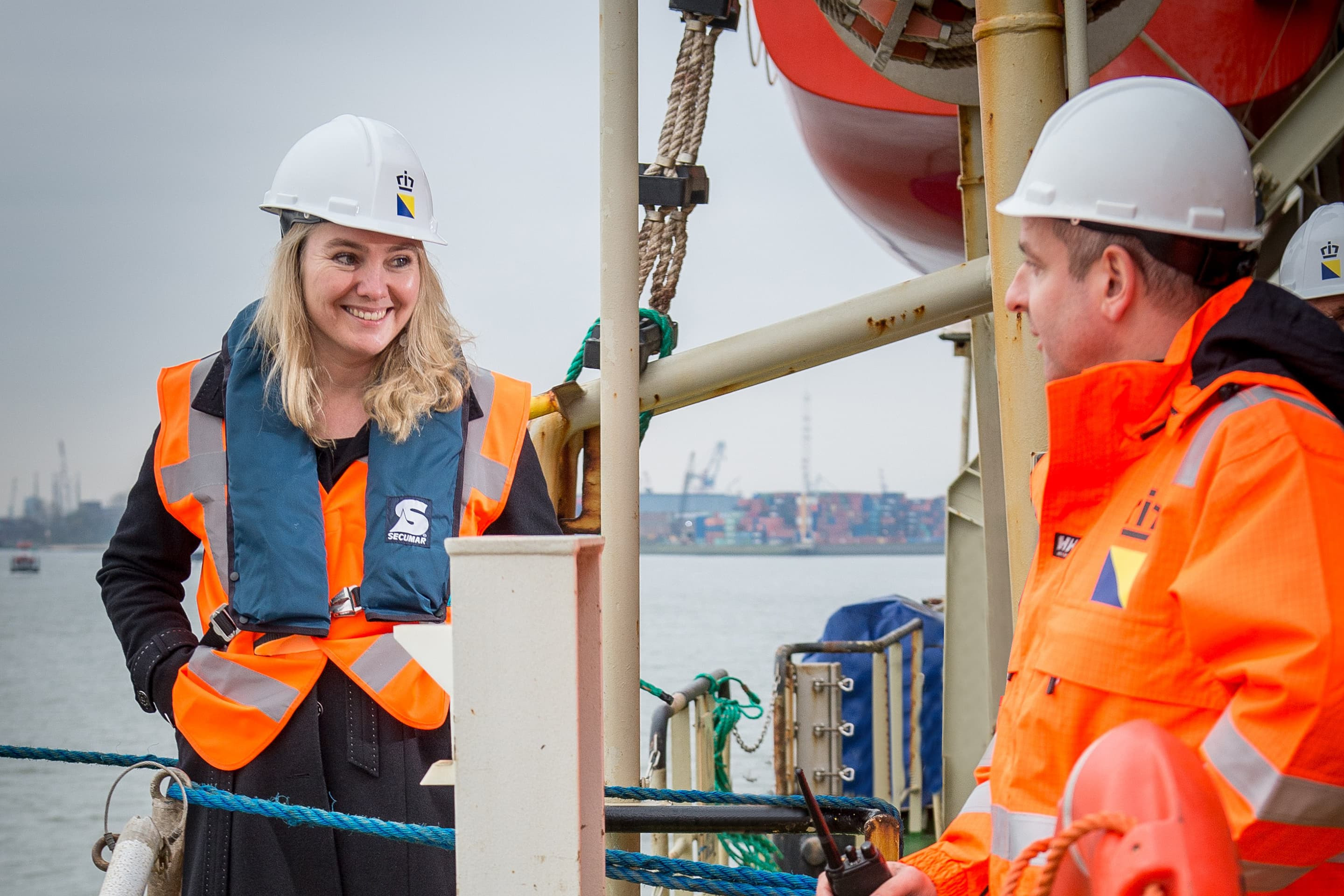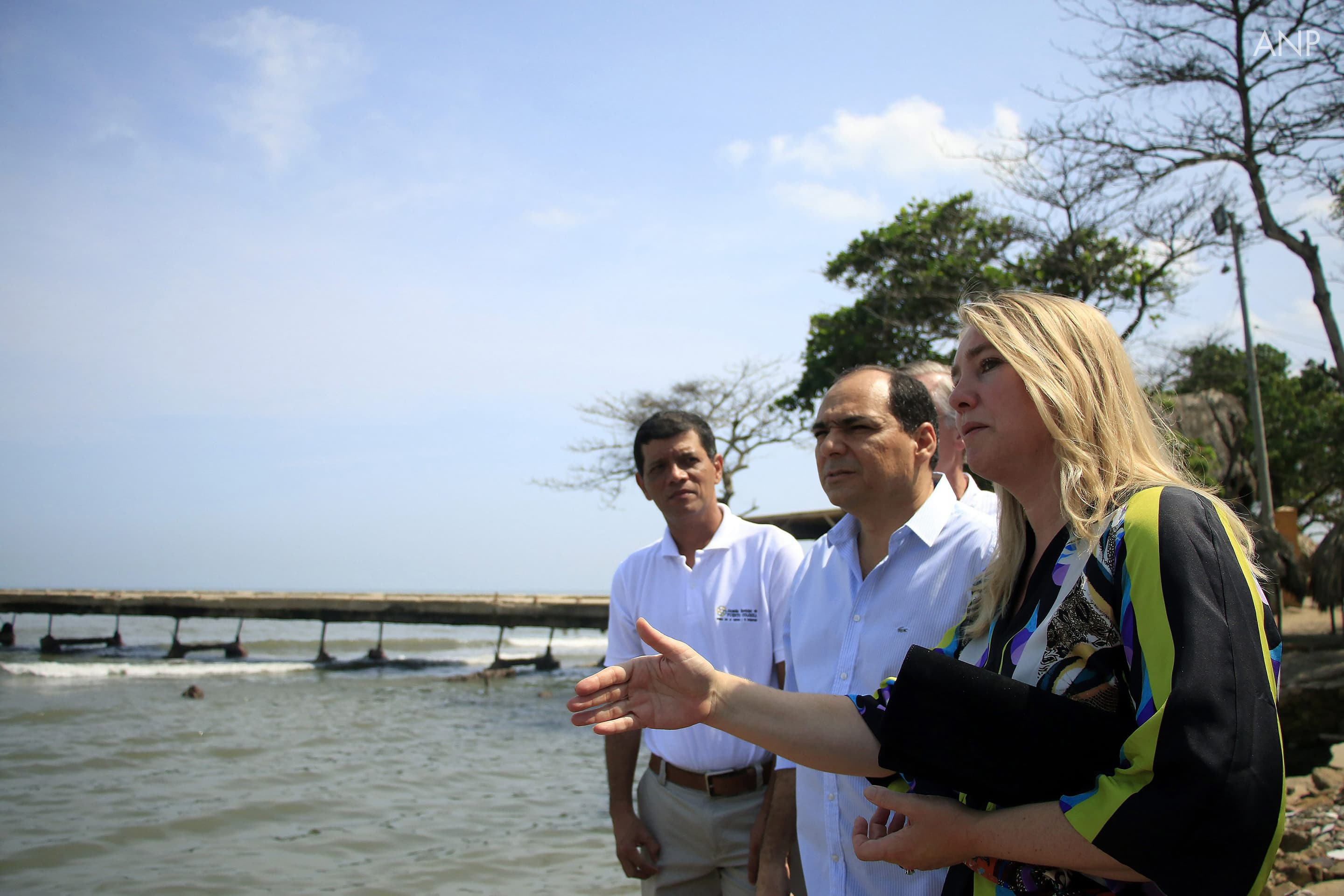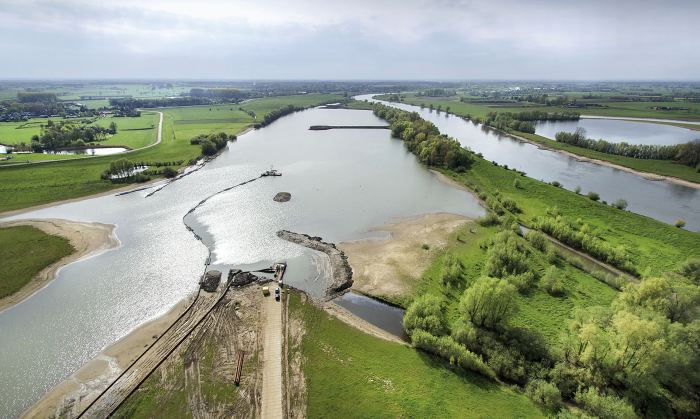Dutch Minister Schultz van Haegen shares her vision about flood protection and the importance of co-creation and innovation
Melanie Schultz van Haegen is Minister of Infrastructure and the Environment for Transport, Public Works and Water Management in the Netherlands. Prior to her appointment in October 2010, she was State Secretary for five years. In an exclusive interview she shares her vision about how best to protect the Netherlands against flooding and the importance she attaches to co-creation and innovation in these complex projects if they are to be a success.



Could you explain the Dutch approach to flood risk management to our readers?
Certainly. We live in a unique country. Approximately 60% of the land surface of the Netherlands is prone to flooding. That area is home to 9 million people, and it is where we generate 70% of our national income. We are the world’s safest delta, but the seas are rising and the weather is getting more extreme. That is why our government presented a new Delta Plan last year that included decisions and strategies to protect our country from flooding in the decades to come. It’s not just a question of tackling the dikes where action is most urgently needed. It’s also about extra protection for vital infrastructure such as utilities and hospitals, water-robust spatial planning and sound evacuation plans. Instead of raising dams and dikes all the time, our focus is shifting increasingly to building with nature. The Room for the River program and the Sand Motor are good examples. Nature is stronger than people and it’s better to use that force rather than fighting against it.
How has collaboration been established in the ‘Golden Triangle’ (government, research institutes and industry) and how is it being encouraged?
Water is an important theme, not just in terms of our safety but also from an economic perspective. That is why the government identified water as one of the Top Sectors of the Dutch economy in 2010. The focus is on water technology, delta technology and maritime technology. The government, business and research institutes are working together closely on innovation, exports and ‘hands on deck’: our human capital. In effect, we are accomplishing two things at once. We are identifying solutions to social issues, for example in the area of flood risk management. At the same time, through the top sectors, we are keeping the Dutch economy moving. We are strengthening the international competitive position of business. It’s a question of expertise, excellence and exports.
Could you give us a few examples?
Take the Afsluitdijk Barrier Dam in the North of the Netherlands. It no longer complies with the legal safety requirements and so it will be upgraded in the years to come. However, we are using a smart approach that will not only provide better protection against high water, but also supply energy generated through pumps and tidal flows. Business, research institutes and government authorities are working together intensively. We are investing tens of millions of euros in ‘innovation contracts’ for projects of this kind. The new technologies are not just good for the Netherlands: we can also export them.
To what extent are we looking at innovative solutions that don’t involve just raising and widening dikes?
Higher and wider dikes are still needed sometimes. However, over the years, we have also learned that you can’t just keep nature in a straightjacket. In recent years, we have started building with nature. I already mentioned the Sand Motor, a man-made sand bank on the coast that will widen our beaches and dunes in a natural way. And Room for the River: high-water channels and floodplains. Water is like a neighbor who sometimes needs just a little bit more room. In addition, there are also innovations in the dikes themselves. Rijkswaterstaat (the Dutch Directorate General for Public Works and Water Management) and the water authorities are involved in joint research looking at backward erosion piping and macro-stability. Backward erosion piping undermines dikes, creating water flows below them that erode the sandy foundations. We also now have 3D technologies to simulate floods and we know the best places to strengthen dikes. With innovative water management of this kind, we are putting the Netherlands on the map as a global player.
Instead of raising dams and dikes all the time, our focus is shifting increasingly to building with nature.
Could you give us a few striking examples?
The latest remedy that has been devised to stop backward erosion piping involves using geotextile: this is material that lets water through, but stops sand. Installing a vertical screen of geotextile on the land side makes the dike stronger. The Rivierenland water authority is already using this technology, with Boskalis and its subsidiary Cofra as contractors. Another example is the flexible flood defense in Spakenburg. The flood defenses in this old fishing village are valuable in cultural and historical terms. And there is very little space. So building standard dikes here is not really an option. That is why a flexible barrier is now being installed: a small wall will be built on the present quay wall to house it. The barrier can be raised very quickly when water levels rise.
What role do hydraulic engineers like Boskalis play in these innovations?
I believe that we have to tackle social problems in an alliance with business and research institutes. That is why I encourage innovation. The main themes for innovation are listed in the Knowledge and Innovation Agenda for the Top Sector Water. Boskalis is closely involved. The Houtribdijk sandy pilot project is a good example.
How is innovation being encouraged?
I have already mentioned the Knowledge and Innovation Contracts that we enter into every year: these are agreements between Dutch companies, research institutes and government authorities about investments in knowledge and innovation in the nine Top Sectors. Tens of millions of euros have been earmarked for innovative projects in hydraulic engineering alone.
The Delta Technology Task Force plays an important role here as well. It creates a favorable climate in which business can innovate and helps to create trust between clients and business. In late September, the government, the Delta Technology Task Force and the research institutes signed a new three-year memorandum of agreement. There are also financial incentives. Innovative projects are fully financed from the Flood Protection Program. Furthermore, the risks are also shared between the program, the water authority and the market: that’s another innovation incentive.
Water is like a neighbor who sometimes needs just a little bit more room.
How can the government succeed in reconciling the interests of all stakeholders during large-scale hydraulic engineering projects in a relatively densely-populated country like the Netherlands?
The answer to this question is far from straightforward. It often happens that projects go straight through people’s back gardens or their farmland. I’m regularly welcomed by people waving pitchforks and banners. However, we are getting better all the time at delivering tailored solutions. For example, when local areas are overhauled to improve flood protection, new leisure areas or new marinas can be built at the same time. We also try to get all the stakeholders involved in discussions from the outset and to include them in the decision-making process. That may involve consultation meetings, or talking to people in their own homes.
Is there a role here for specific types of contract, such as alliances, and how would that work?
That’s a possibility. An alliance contract assumes a shared responsibility for the principal and the contractor and it can result in a broader support base. But even with this type of contract, support can’t be taken for granted and creating common ground continues to be an important priority.
I hope everyone will have opted for prevention within 25 years so that people are better protected against flooding
Can the government play a role in terms of incentivizing programs like Building with Nature (the Sand Motor, for instance) and how?
Certainly. Natural solutions are preferable. I have already explained the thinking behind this. The use of natural options can, for example, be included in the conditions for a tender procedure.
To what extent is the Dutch approach important for delta regions elsewhere in the world?
Because of where we are located and our experience with flood disasters, our country is an expert in the field of delta technology and hydraulic engineering. Our expertise and skills are highly rated throughout the world. Even now, people from all sorts of countries come to visit the Eastern Scheldt Storm Surge Barrier, which dates back to 1986. And the way the Netherlands has managed to integrate our flood defenses in spatial planning is unique in the world. Dutch companies are now active in more than 80 countries, helping the local people with water management. We are present in Indonesia, Bangladesh, Myanmar and Vietnam but also, for example, in New York, Germany and in the Balkan countries. In many parts of the world, it’s the first thing you hear when there is an emergency involving water: Bring in the Dutch! However, that is really too late. Our focus now is on the transition from ‘repair’ to ‘prepare’. Rather than responding to a crisis and having to rebuild everything following a flood, the aim should be to make preparations so that we can cope better with high water or major storms. This may involve building dams and dikes, but smarter spatial planning and building with nature are also options.
over the years, we have also learned that you can’t just keep nature in a straightjacket.
What efforts are you making to share our experience in the Netherlands internationally?
I lead business missions to many countries facing water problems. This year, for example, I have been to Colombia, Egypt, Bangladesh and Mexico. In the water sector, projects are often commissioned directly by government authorities or agencies linked to the government (such as port authorities or drinking water companies). Foreign ministers or senior civil servants want to talk to their colleagues in the Netherlands about how we tackle the challenges here, and what role our commercial sector plays. As a minister, I can open doors that would otherwise stay closed to individual companies.
Our magazine is called Creating New HORIZONS. All things considered, what is your ultimate horizon?
People will never beat nature. But I hope that we can manage water a lot better in the world of the future. We can’t just keep looking on as floods, droughts, hurricanes and tsunamis take an increasingly high toll, not just in terms of material damage but also human lives. I hope everyone will have opted for prevention within 25 years so that people and their habitats are better protected against flooding and so that people have adequate supplies of drinking water.
